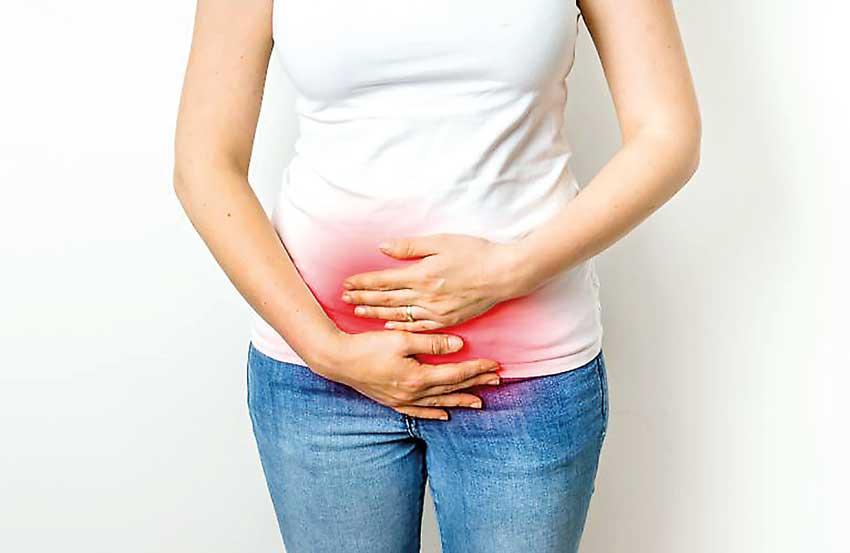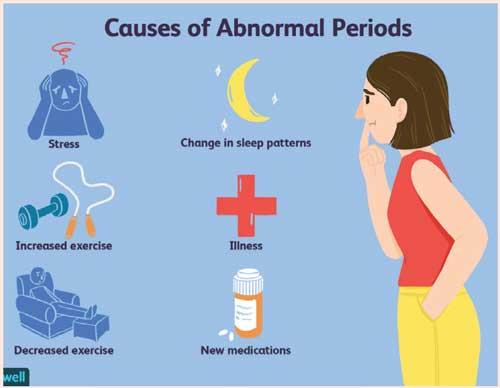Reply To:
Name - Reply Comment

 Women menstruate every 28 days since puberty, but a regular menstrual cycle can range from 21 days to 35 days. Not all women have the same number of days in a cycle, and the duration, features, and intensity of a menstrual period can vary from woman to woman. Most women have menstrual periods that last three days to seven days.
Women menstruate every 28 days since puberty, but a regular menstrual cycle can range from 21 days to 35 days. Not all women have the same number of days in a cycle, and the duration, features, and intensity of a menstrual period can vary from woman to woman. Most women have menstrual periods that last three days to seven days.
Abnormalities in menstruation
Amenorrhoea: Amenorrhoea means an absence of menstruation, where a woman has completely stopped menstruating. The absence of a period for 90 days or more is considered abnormal unless a woman is pregnant, breastfeeding, or going through menopause (which generally occurs in women between ages 45 and 55). Adolescent females who haven’t started menstruating by age 15 or 16 or within three years after their breasts begin to develop are also considered to have amenorrhea.
 Oligomenorrhoea refers to periods that are infrequent, inconsistent and “light”. Women with oligomenorrhea have about 6 periods for a whole year.
Oligomenorrhoea refers to periods that are infrequent, inconsistent and “light”. Women with oligomenorrhea have about 6 periods for a whole year.
Dysmenorrhoea technically means difficult menstruation, to have painful periods and severe menstrual cramps. Some discomfort during the cycle is normal for most women, however, debilitating pain that is severe enough to disrupt normal activities debilitating is considered serious.
Abnormal uterine bleeding may be due to a variety of menstrual irregularities, including a heavier menstrual flow; a period that lasts longer than seven days; or bleeding or spotting between periods, after sexual intercourse, or in menopausal women.
When do periods become worrisome?
Each woman has her own definition of a normal period. Any deviation from the norm should be worrisome, and normalcy, in the case of periods, are subjective. Recent onset sudden changes may cause women to worry, and it is always best to investigate further.
Periods that occur in intervals of less than 21 days or more than 35 days apart, periods that last longer than seven days, a menstrual flow that is much heavier or lighter than usual, especially in those whose period was previously normal, are worrying features.
Missing three or more periods in a sexually active fertile woman with a normal menstrual cycle too, warrants further investigations, especially to rule out pregnancy.
Periods that are accompanied by pain, cramping, nausea or vomiting. Most women are conditioned to believe period pains are normal and should be tolerated, as it is something that is experienced by all women. However, debilitating pain should be investigated further, as most women with extremely painful periods end up being diagnosed with conditions such as Endometriosis. Early diagnosis leads to better treatment outcomes in such cases.
Bleeding or spotting that happens randomly between periods, bleeding or spotting following sexual intercourse, or in post-menopausal women should be investigated further, as it could be an early sign of some cancers of the female reproductive system.
Menstruating women must keep an accurate record of when a period begins and ends, and the amount of period blood flow (which can be quantified by pad counting). Other signs and symptoms such as bleeding on “normal days” between periods, the intensity of menstrual cramps or pain, changes in the regular period, and the passage of blood clots must also be noted.
Period tracker apps are freely available to be downloaded on smartphones, where such features can be tracked. Maintaining a diary will help paint a clearer picture for the physician upon consultation, and it helps the patient understand her bodily function in a better manner too. Speaking up about periods and period issues should not be seen as an embarrassment, for it is just another basic bodily function, and it’s high time the taboos are broken.